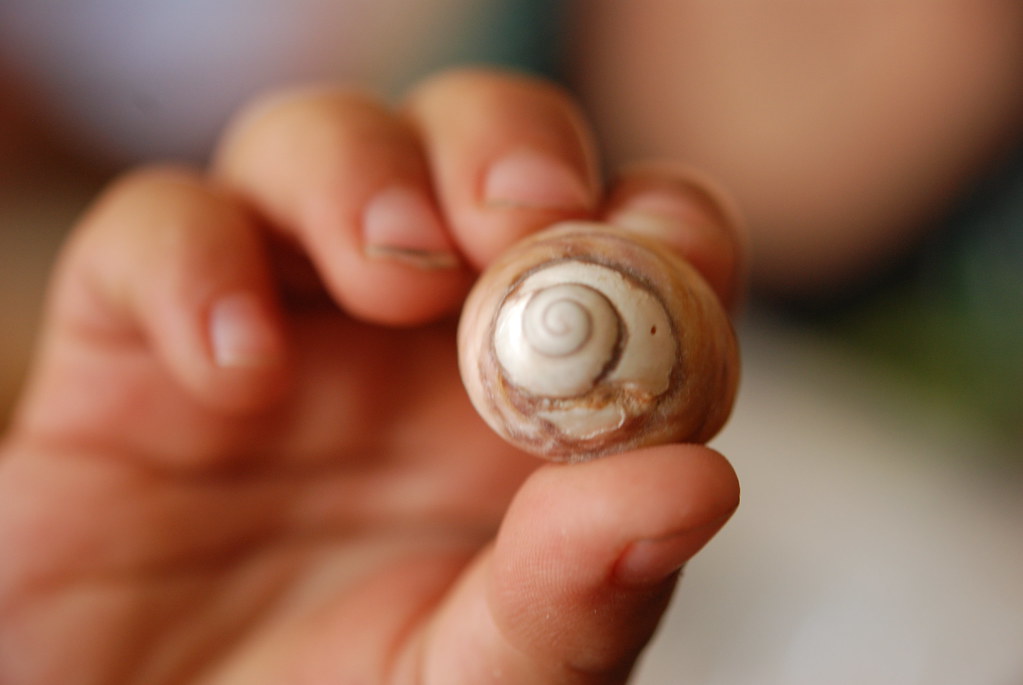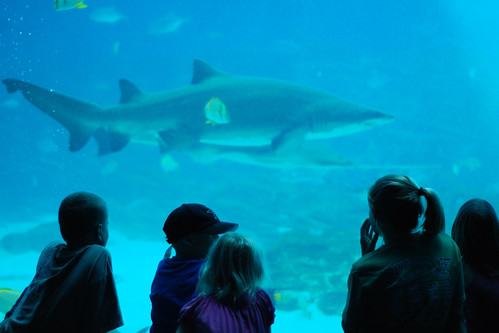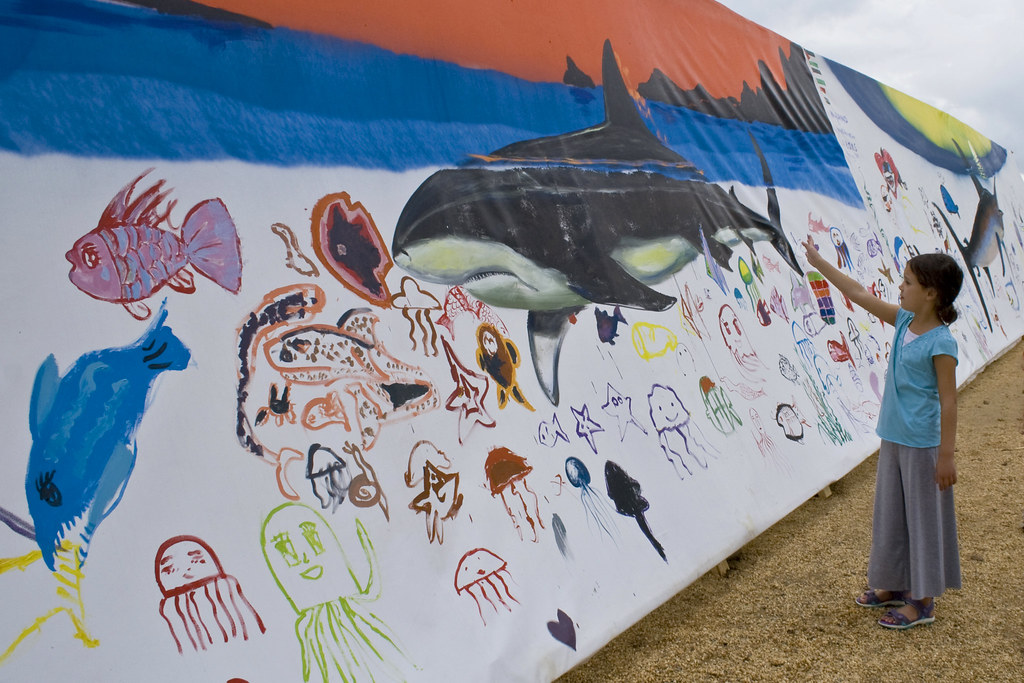“The mediocre teacher tells. The good teacher explains. The superior teacher demonstrates. The great teacher inspires.”
― William Arthur Ward
Marine science educators spend a tremendous amount of time working to inspire children of all ages to protect and conserve our oceans. It is a task that is simultaneously easy and impossible. Children are enormously curious individuals, little lovely beings that find excitement and wonder in every corner of the world. A moment of curiosity for a child is intense, focused, wrought with never-ending questions. Then it is gone, and they are on to the next wonder of life.

Image courtesy of Flickr User gosheshe.
When it comes to our natural resources, those of us in the seafood industry strongly believe in retaining and enhancing sustainability. Poorly managed fisheries and unhealthy oceans will eventually put us out of business. In order to protect the future of the seafood industry, we must instill a respect for the natural environment and shape fisheries to more sustainable standards. We focus very hard on changing the ideals of consumers and appealing to fishermen and policy makers.
Investing in our children
We have been successful in laying a foundation for sustainability, but the fate of the industry is ultimately determined by future generations. Today’s youth will make tomorrow’s decisions; which means that now is the time to show our children how important it is to protect and conserve our oceans. Children are naturally inquisitive about the ocean. The sheer immensity and fantastic diversity holds a particular kind of magic for kids. If you doubt this, just sit down with your kids and watch Finding Nemo or The Little Mermaid together as a family. There’s something incredible about ocean creatures that can utterly mesmerize children of all ages.
It’s not exactly easy to sit down with a child and explain sustainability and marine conservation, however. It is a complex matter which can become jumbled with numerous heavy terms and abstract concepts. The most intuitive way for kids to understand an idea, no matter the complexity, is by playing a game. There is tremendous potential to teach youth about biology, life cycles and diversity – and ultimately a love for the ocean – using play.
Using play to communicate ocean awareness
The intensity of a child’s focus is a wonderful thing, but it is ephemeral. Play is arguably the most effective way for children to learn. It encourages creativity, memory retention, and engagement. Kids love to be engaged and it is fantastically easy to hold their attention when it comes to creatures in the ocean. The entire concept of teaching marine science becomes a game. We can treat marine science like a puzzle by claiming each piece to be unique and irreplaceable, yet incomplete without the others.
Costumes
Children love to wear costumes– Halloween is a testament to this fact. Marine science educators have honed in on this and created a plethora of ocean creatures costumes to explain the anatomy of crabs, seabirds, seals, sea lions, and even whales. With the right materials, a kid can become anything. Costumes are not always easy to make, but a simple seal outfit can be made out of a fur coat, goggles, swimming flippers, and a printed face mask. Children will love it and will take away a greater knowledge of seal anatomy.
Playing tag- predator and prey
Tag is very likely the best, simplest game ever invented. You can plug in just about any concept and kids will grasp the meaning behind it. Predator-prey relationships are learned when kids pretend to be sharks or orcas hunting fish, or seabirds foraging for krill. The idea behind marine protected areas is much more easily explained when they offer a “safe zone” for animals from the pretend oil drillers and fishermen. A great tagging game will stick with a child and they will play it with their friends even outside of the lesson.

Image courtesy of Flickr User terren in Virginia.
Rock, paper, life-cycle
Life cycles can become tangible for children if they are able to play the part of the creature they are studying. A simple game of rock-paper-scissors can turn into an opportunity for a child to enter a friendly competition that results in the winner advancing to the next life stage of an animal. For example, a child will begin as a salmon egg and advance to a fry, then move on to a smolt, an adult, and then the final stage of a spawner before death resets the game. The different life stages are much more memorable when they must be achieved, earned by winning over opponents.
Molding clay
Clay is a marine science educators best friend. The extremely complex structures of plankton can be molded perfectly by little hands when they are given clay. Children enjoy creating fish, dolphins, sharks, crabs, and love being able to take them home after. Clay allows students to express themselves while learning external structures and placing a special value on the animal they create.
Fun at the beach
Very simple things can sometimes help us create the most valuable lessons. Just spending a day at the beach can instill a fascination and wonder for our coastlines, and sand is truly one of the greatest toys on the planet. A child will easily spend hours building elaborate sand castles. The inevitable incoming tide offers an excellent chance to explain the intertidal zone and creatures that live there. Seaweed and seashells present beautiful and endless opportunities to create games and work in adaptations along the way.
Each creature is incredible and connected to everything else. If even one is lost, the puzzle begins to fall apart. This is the lesson of marine science education that plants the seeds of scientific thought and environmental conservation. Learning science is not about memorizing facts. It is about discovery, exploration, and experiencing the joy of learning. Every hands-on activity makes a lasting impression. Every game holds a fantastic message of ocean conservation.

Image courtesy of Flickr User woodleywonderworks.
One day our children are going to be the teachers, the scientists, the fishermen, the consumers, the seafood lovers, the policy makers, the regulators, and the politicians. By exposing them to the marine environment through play we are showing them how to love and respect our oceans. I urge you to inspire your child with play so that when the moments come for them to make the massively important decisions for our environment, they will make the positive choices. Even if they remember only one thing – what sand between their toes feels like, the slimy touch of seaweed, how amazing their little clay shark is – it’s enough for them to recall the magic and the wonder of the sea.
Remember the magic that the ocean held for you as a child and help us protect it. Let’s keep the puzzle united and grand so that it will last for all future generations of children to enjoy. Support businesses that strive to conserve the natural environment, like Pucci Foods.


